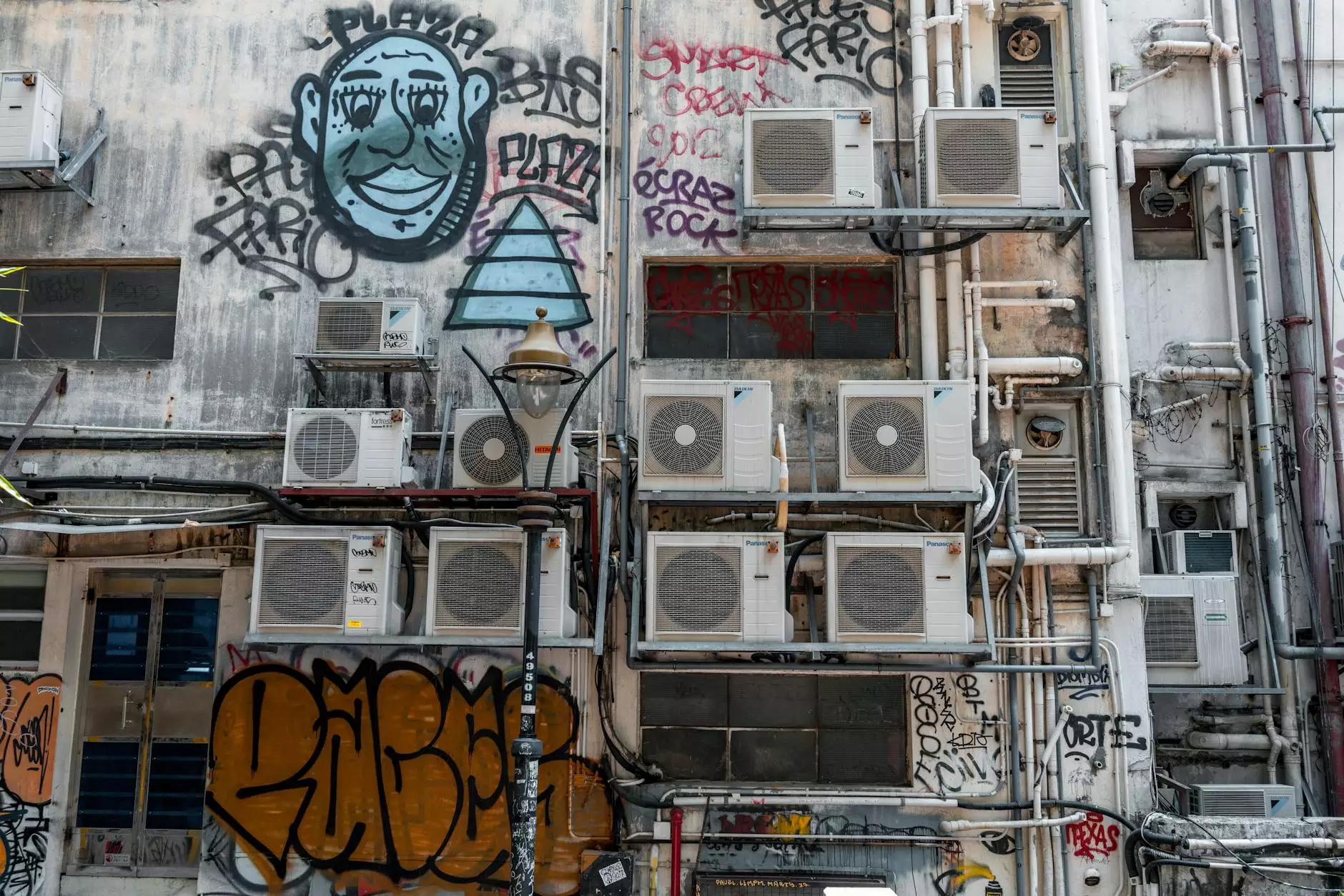Ductwork Supplies: Your Ultimate Guide to Quality Air Management

Ductwork supplies are integral to maintaining an efficient and effective heating, ventilation, and air conditioning (HVAC) system. Without the right components, both residential and commercial buildings can experience poorer air quality and increased energy costs. This article delves into the world of ductwork supplies, their importance, and how they contribute to your overall heating and cooling systems.
The Importance of Ductwork in HVAC Systems
The design and quality of ductwork are crucial for achieving optimal air flow and temperature regulation within a property. Properly installed and well-maintained ductwork ensures that conditioned air reaches every room, enhancing comfort while minimizing energy waste. Here are some key points to understand:
- Air Flow Efficiency: Ducts that are too narrow, poorly installed, or obstructed can dramatically reduce airflow, leading to inconsistent temperatures throughout the space.
- Improved Indoor Air Quality: Quality ductwork supplies can help reduce the circulation of dust, allergens, and pollutants, contributing to healthier indoor air.
- Energy Cost Savings: Efficient duct systems reduce the workload on HVAC units, leading to lower energy bills and extending equipment lifespan.
Understanding Ductwork Supplies
Ductwork supplies encompass a variety of products including duct materials, fittings, and insulation systems. Each component plays a specific role in the performance of the HVAC system. Let’s explore these categories:
Duct Materials
The choice of material is vital for the durability and effectiveness of ductwork. Common materials include:
- Sheet Metal: Known for its durability and long lifespan, it is often used in commercial settings.
- Flexible Ducting: Ideal for residential applications, these are easier to install and maneuver in tight spaces.
- Fiberglass Duct Board: This material provides good thermal insulation and is a popular choice in energy-efficient designs.
Duct Fittings and Accessories
Duct fittings are critical for the efficient functioning of any HVAC system. They allow for smooth transitions and connections between ducts. Important fittings include:
- Elbows: Used to change the direction of airflow, with common angles of 45 and 90 degrees.
- Tees and Wyes: Vital for branching off duct lines.
- Reducers: Facilitate the transition between different duct sizes.
Duct Insulation
Insulation is essential in preventing energy loss. Insulated ducts help maintain the temperature of the air traveling through them, thus improving system efficiency. Different types of insulation include:
- Fiberglass Insulation: Commonly used due to its effectiveness and affordability.
- Foam Board Insulation: Excellent for minimizing thermal bridging and enhancing overall system efficiency.
- Reflective Insulation: Particularly useful in hot climates for reflecting radiant heat away from the ductwork.
Choosing Quality Ductwork Supplies
Selecting the right ductwork supplies can determine the overall functionality and longevity of your HVAC system. Here are some key considerations when choosing supplies:
Assess the Needs of Your Space
Understanding the layout and size of your home or building will help determine the quantity and type of supplies needed. In addition:
- Evaluate existing ductwork for upgrades or potential issues.
- Consider the specific heating and cooling load requirements.
Quality Over Cost
While it might be tempting to go for the cheapest options available, investing in high-quality ducts and fittings can save you from costly repairs and inefficiencies down the line. Look for:
- Reputable manufacturers with excellent reviews.
- Products that comply with industry standards.
Getting Professional Help
If you’re not experienced in HVAC installation, consulting with professionals is highly recommended. Professional assessments can ensure that all installations comply with local codes and function efficiently.
The Role of Air Duct Cleaning
Even the best ductwork supplies can fall short without proper maintenance. Air duct cleaning should be a key component of your HVAC regimen:
Why Clean Ducts Matter
Regular air duct cleaning enhances air quality and efficiency by:
- Reducing dust and allergens circulating through the air.
- Preventing mold growth in humid environments.
- Improving overall airflow and system efficiency.
Signs You Need Air Duct Cleaning
Be vigilant for signs that your ducts may need cleaning:
- Visible dust and debris: Observe the registers and vents for significant buildup.
- Unexplained allergies or respiratory issues: Increased allergy symptoms can signal that your air quality is compromised.
- Strange odors: Foul smells when the HVAC system is operating can indicate contaminants in the ductwork.
Conclusion
In conclusion, ductwork supplies are crucial to the successful operation of HVAC systems in both residential and commercial buildings. With the right materials, fittings, and maintenance practices, property owners can ensure optimal air management, reduced energy costs, and enhanced indoor air quality. Always remember the importance of professional assessments and regular cleaning to maintain the efficiency and effectiveness of your system.
For more information about selecting quality ductwork supplies and services related to Home Services, Heating & Air Conditioning/HVAC, and Air Duct Cleaning, visit us at DW Air. We are committed to providing top-notch solutions to ensure your comfort and safety.









